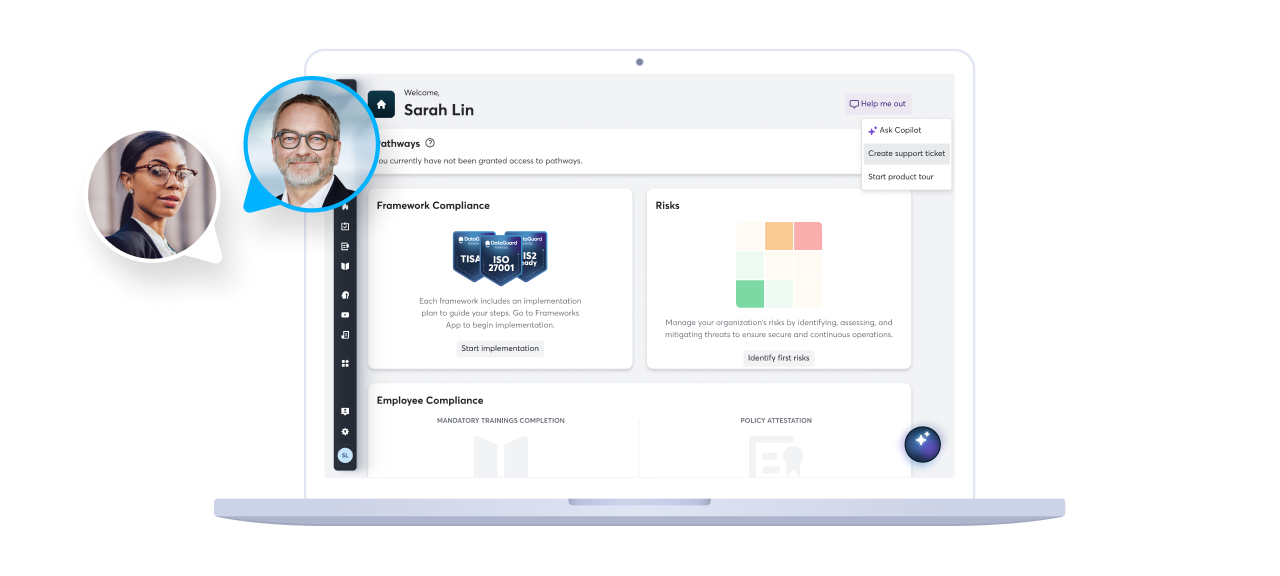In this article, we explore the challenges of data anonymization and the opportunities AI brings to the table.
In this post, we'll cover
- Data anonymization and data privacy
- What is data anonymization?
- Why does data anonymization matter?
- Challenges of anonymization
- Employee data safety
- Anonymization in Microsoft Forms: A critical perspective
- AI anonymization: How can it help?
- AI anonymization supported by external providers
- AI Technologies for survey anonymization
- Limits of AI Anonymization
- Conclusion: AI anonymization can support your business, but it isn’t the panacea
Data privacy isn’t just about compliance, it’s about trust. And whether you’re handling customer records or handling internal data—your ability to protect personal identities is a central tenet of that trust.
Data anonymization and data privacy
That’s why data anonymization is more than a technical solution and is now a core part of modern data privacy and compliance. This is especially true for sensitive internal activities like employee surveys, where genuine anonymity is essential if you want to get candid and valuable feedback—while staying compliant with the General Data Protection Regulations (GDPR).
But what happens when tools like Microsoft Forms can’t fully guarantee anonymity? Artificial Intelligence (AI) may offer you a solution.
In this article, we’ll break down what data anonymization really means, why it matters and how AI could change the data anonymization game for your business.
What is data anonymization?
Anonymization is the process of stripping data of any identifiable information, making it impossible to trace back to specific individuals—even by those handling the data. Unlike pseudonymization, which replaces identifying details but still allows for re-identification under certain conditions, true anonymization ensures that no one (not even the data controller) can link the information back to a person.
Why does data anonymization matter?
This is a critical part of data privacy. When you collect, store, or analyse personal data—whether it’s customer feedback, employee records, or HR analytics—you take on the responsibility of protecting that data. Anonymization reduces privacy risks by ensuring that individuals cannot be identified, even if the data is accessed by unauthorised parties.
Challenges of anonymization
But achieving full anonymization isn’t always easy. Many tools, including Microsoft Forms, still collect metadata such as IP addresses, which could, in theory, be used to identify respondents. This means that in many cases, what’s happening is pseudonymization—where data is masked but not completely anonymous. And under the GDPR, pseudonymized data is still considered personal data and subject to strict regulations.
Employee data safety
This challenge is particularly relevant in HR settings, where organizations handle large amounts of sensitive employee data. From performance reviews to engagement surveys, ensuring true anonymity can have a direct impact on participation.
Even worse, if you mishandle this data because of insufficient security measures or a lack of anonymization, it can lead to compliance risks, reputational damage and a significant breakdown in employee confidence.

Learn how a GDPR audit can protect your business and boost compliance
Anonymization in Microsoft Forms: A critical perspective
Microsoft Forms is frequently used for employee surveys and advertizes the capability to conduct anonymous surveys. But are they truly anonymous?
Potential data privacy risks
Lack of transparency from Microsoft
Even if names or email addresses are not stored, metadata such as IP addresses or timestamps might be processed by Microsoft. This data could theoretically link responses to individuals.
Risk from mandatory login
If employees are required to log in with their Office 365 account, this could make responses traceable. By default, Microsoft forwards the names of logged-in users.
Personal data entered by participants
Even if names are not requested, participants may unintentionally provide personal information in free-text fields.
What this means for businesses
Microsoft Forms doesn’t provide full anonymization—only pseudonymization. In some cases, responses could still be linked back to individuals, which could raise concerns if your business needs to guarantee anonymity.
For organizations handling sensitive employee data, it’s worth exploring alternative survey tools designed with stricter anonymization measures.
So how can you get true anonymity while still collecting meaningful insights you can actually use?
Well, here’s where AI could make a real difference. By intelligently stripping out identifying details, masking metadata and enhancing privacy safeguards, AI-driven anonymization tools could offer a way to bridge the gap between usability and compliance.
How? Let’s find out.
AI anonymization: How can it help?
AI is changing the game for data privacy and can offer smarter ways to anonymize survey responses and preserve their value. But is it better to build your own solution or buy one off the shelf?
Here’s a breakdown of the key advantages and challenges of building your own AI-driven anonymization tool.
Advantages of keeping AI Anonymization in-house
✅ Full control over the anonymization process—you don’t need to share sensitive data with third parties
✅ Transparency and documentation—meets audit and GDPR requirements (e.g., Article 25 GDPR)
✅ Enhanced data security—no dependency on external providers
✅ Flexibility—adaptable to new legal and technical challenges
✅ Cost savings—no licence fees for external software
Disadvantages of keeping AI Anonymization in-house
❌ High initial effort—development and implementation take time and money
❌ Complexity—you might need external expertise
❌ Risk of re-identification—faulty anonymization could lead to data protection breaches
AI anonymization supported by external providers
If building your own model isn’t a viable option, you could consider an external provider. But not all solutions are created equal. Here’s what to look for when choosing an off-the-shelf anonymization tool.
Key selection criteria for AI Anonymization
✅ Built-in privacy protections: Look for solutions designed with Privacy by Design and Privacy by Default principles—these will have anonymity as a core feature, not an afterthought
✅ Proven anonymization techniques: The best tools use established methods like:
- k-Anonymity–Groups data to prevent individuals from being singled out
- Differential Privacy–Adds small amounts of random noise to obscure identities
- Data Masking–Encrypts or removes personal data while keeping the dataset useful
✅ Transparency & compliance: Choose a provider that clearly explains how their system works, complies with GDPR and hosts data securely
✅ Strong legal safeguards: Ensure there are solid contractual protections in place, like data processing agreements and standard contractual clauses for international data transfers

Stay compliant with expert privacy insights
Get the latest privacy trends, regulations, and actionable tips—direct to your inbox.
AI Technologies for survey anonymization
AI technologies offer a variety of approaches to anonymising survey data. For text anonymization, AI can automatically detect and remove personal data in free-text fields while retaining context and ensuring the data remains meaningful.
Other techniques include Differential Privacy, which minimizes re-identification risk by adding noise to the data, and concepts like k-Anonymity and l-Diversity, which group datasets so that each person remains indistinguishable among at least “k” participants.
An innovative method is synthetic data generation, where generative AI creates new datasets that don’t represent real individuals but can still be used for analysis. Additionally, IP address filtering and VPN solutions can prevent traceability, while AI neutralizes metadata.
Limits of AI Anonymization
Despite modern technologies, AI anonymization has its limitations. Absolute anonymity still can’t be guaranteed, as metadata such as IP addresses or timestamps could still allow inferences.
To mitigate these weaknesses, technical measures will still need to be complemented by organizational data protection measures. Only this combination can ensure high levels of security and privacy for affected individuals.

Get compliant. Manage risks. Simplify your compliance journey
Conclusion: AI anonymization can support your business, but it isn’t the panacea
AI provides innovative approaches to anonymising data and improving data privacy.
Employee surveys benefit from AI by enhancing trust and participation. However, residual risks remain when third-party providers are involved. The best solution combines AI technology, clear data protection policies, and transparent communication.
We can help! Get in touch with the team to talk about data protection or how you can fast-track your GDPR compliance.












